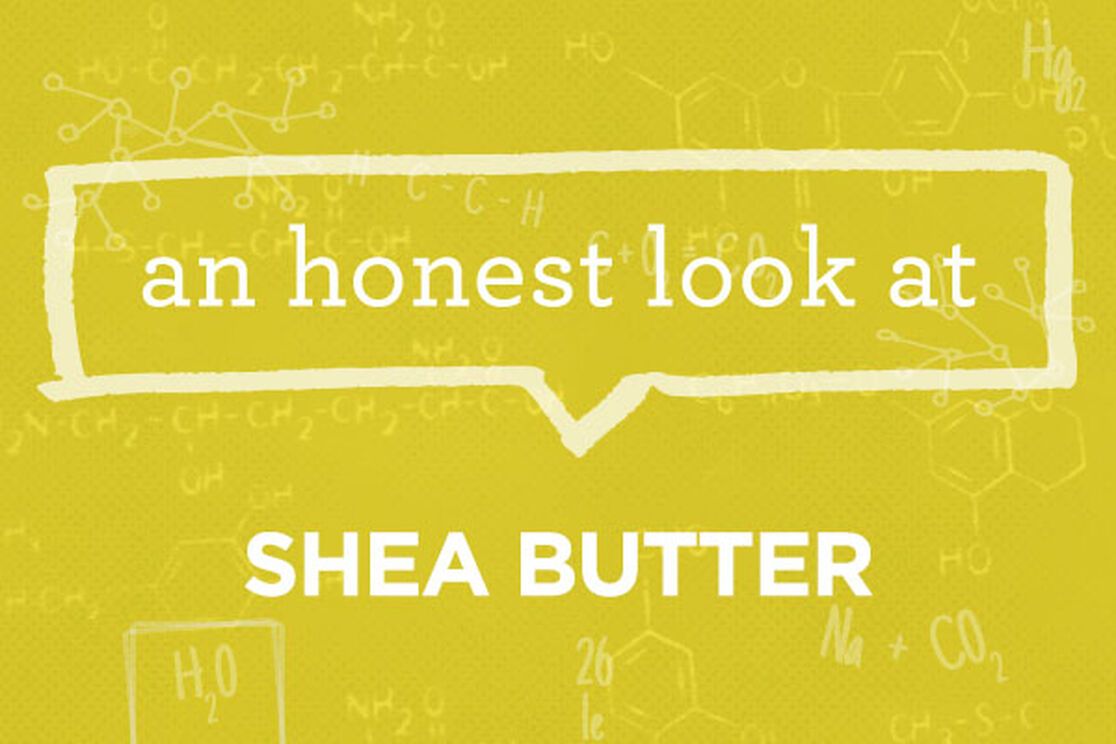This is part of our ongoing series helping consumers better understand chemicals, chemistry, and product formulations. We translate the science, bust the myths, and give you an honest assessment, so you can make informed choices for your family!
Ingredient:
Butyrospermum Parkii (Shea) Butter
What it is:
Shea Butter is the creamy fat extracted from the nut of the African butyrospermum parkii tree.
What it does:
Shea butter has been used for millennia in Africa and for more than 60 years in edible specialty fat formulations and chocolate (1). While it’s been used on skin and hair for generations in some parts of the world (it was even one of Cleopatra’s favorites!), it’s only made it’s debut in commercial products in the US in the past few decades (2). Now, it’s a staple in many cosmetic, hair, and body care products because it’s an incredibly effective nourishing moisturizer that also soothes skin (2-6).
Why we use it:
We use organic shea butter in a variety of our personal care products because of its proven skin care benefits. Plus, it’s plant-derived and it’s so safe the Food and Drug Administration (FDA) considers shea butter as edible and “Generally Recognized as Safe” (GRAS). Safe, and effective – that’s what we love!
References:
- Lovett, P. N. (2010). Sourcing shea butter in 2010: a sustainability check.Global ingredients & formulations guide, 62-68.
- Goreja, W. G. (2004). Shea butter: the nourishing properties of Africa's best-kept natural beauty secret. TNC International Inc.
- Rabasco Álvarez, A. M., & González Rodríguez, M. L. (2000). Lipids in pharmaceutical and cosmetic preparations.
- Varothai, S., Nitayavardhana, S., & Kulthanan, K. (2013). Moisturizers for patients with atopic dermatitis. Asian pacific journal of allergy and immunology, 31(2), 91.
- Goreja, W. G. (2004). Shea butter: the nourishing properties of Africa's best-kept natural beauty secret. TNC International Inc.
- Alander, J. T. (2012). Chemical and physical properties of emollients. InTreatment of Dry Skin Syndrome (pp. 399-417). Springer Berlin Heidelberg.
We aim to provide you with the most honest and credible information possible. This article was reviewed for accuracy by The Honest Team and its internal technical experts.
blog_review_statement








